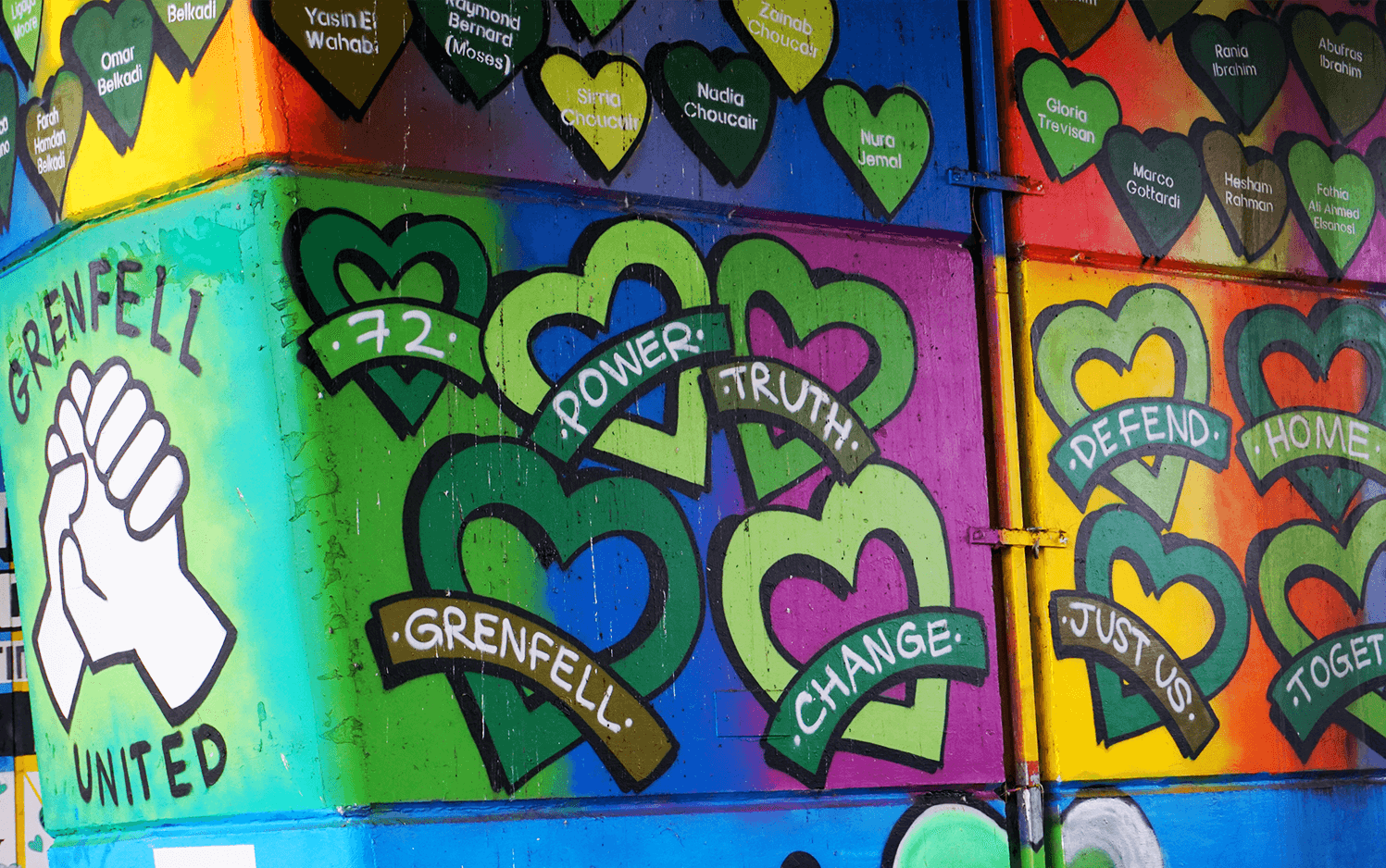Publish date: 28 October 2022
*Names have been changed

as a representation of herself
Whenever she would go to church, Anne* would sit with her back facing the charred remains of the Grenfell Tower because she “couldn’t face it.”
She had lost two carers in the 2017 fire, and both of her sons were also directly affected. It all felt like too much, on top of everything else going on in her life.
Prior to the fire, Anne experienced childhood abuse, racism, and low self-esteem, with poor access to health and social services. She had ongoing health challenges, hadn’t felt able to go out alone, and had felt trapped in her dimly-lit basement for years.
One day, Anne saw a poster at the third sector organisation, Action for Disability Kensington & Chelsea. It was an advertisement from the Grenfell Health and Wellbeing Service, offering trauma support for people affected by the fire.
She wrote down the phone number, but didn’t actually phone the service until 18 months later.
“I thought I could cope,” she said. “I didn’t feel okay about sharing my business. I was very afraid in the beginning, of telling her (the therapist) my business, but not anymore. She was patient with me, she had sympathy and empathy,” says Anne.
Tailored one to one support
Anne says she was depressed and hopeless, and felt she needed a different kind of support than what was usually offered under the National Health Service.
“When I first met Anne in her own home, she said if you’re coming for six weeks I’m not interested,” says Cathy*, Anne’s therapist.
Anne nods. “I was so distressed when other people came around for six weeks, and then I had to reapply and reapply (for therapy). I needed more.”
The Grenfell Health and Wellbeing Service (GHWS) was able to offer Anne more long-term support, that was culturally sensitive, and tailored to her needs. The sessions were initially held at Anne’s home while she developed the confidence to be able to leave her house. During the Covid-19 pandemic, when the country was under lockdown, Anne’s therapist even offered to stand outside her house and do sessions there.
“I didn’t trust her initially, but after six months I began to trust her. She understood me. I let out some of the grief and pain,” says Anne.
Anne’s therapist says, “there’s something about meeting someone where they are and staying by their side.”
During therapy, Cathy supported Anne to gradually go out more and engage in social activities. Anne started attending everything from exercise classes, drama classes, and reading groups, to a creative writing course, computer classes, employment support, and a gardening group.
“I’d never even done gardening before. Or creative writing or drama. My therapist encouraged me to do everything. I was afraid of going out before,” says Anne. “We had to focus on the things that I could do but do them differently; and how my life could look,” she says.
Don’t blame the seed
These activities offered insights that have helped Anne on her journey so far. In the gardening group run by the GHWS, for instance, they used gardening analogies to discuss healing and growth.
“Remember we said if you plant a seed and it doesn’t thrive, you don’t blame the seed, we look at the conditions around the seed and whether the seed is getting what it needs,” says Cathy to Anne.
Anne learnt that childhood trauma had caused her to suppress her emotions.
“My parents and people my parents’ age used to say that they beat us because it was good for us and if we cried, they said they’d give something to cry about. But it wasn’t good for us. I felt unloved. I used to show 10 percent of my emotions on the outside, but held 90 percent of it inside.
“I thought it was normal to suppress myself until I talked to other people. I had to learn self-compassion. I went to three workshops on self-compassion and then I got it. I’m happy I got it. I was kind to myself after.”
She learnt helpful techniques, like how to breathe to sooth her anxiety. “It recharges my mind and faith,” says Anne. “After all I now feel comfortable in my own skin.”
Visualisation has also been helpful. Cathy asked Anne to visualise a memory of happier times when she felt okay to go out. Anne remembered back when she was an ‘outty’, biking down Ladbroke Grove, with the wind in her hair screaming ‘weeee.’ Those days had felt so long gone. But sure enough, when Anne started feeling a bit better, she took her mobility scooter down the road, just like old times.
Grateful
Anne has now regained control of her life, and therapy is coming to an end. Her hope is to empower people, who may be struggling like she was.
“You’ve got to trust someone. Even if you tell them a little bit and build up the trust. And if you’ve got a good therapist like I have, you trust and believe in them, and they trust and believe in you. I believe I got to trust her as a therapist and friend.
“Since I started going out and taking exercise and gradually building up my strength I now no longer need the mobility scooter and can walk wherever I need to go.”
“I’ve got Cathy to thank for all of it. She put all these things in place for me. I didn’t speak. I was afraid to speak so I was always silent. I didn’t believe in myself before but I do now. I learnt that I can be strong. I found my feet, I found my voice in the end. I’ve found my faith again. I didn’t believe in myself but I do now. I’m very happy and grateful to myself and my therapist, and all the Grenfell Health and Wellbeing Service staff,” says Anne.
Now when Anne goes to church, she no longer sits with her back facing the Grenfell Tower. “Since therapy I can face it. I can face it now, and I say a prayer for all the people who died in the fire. I can do that now but I couldn’t do it before,” says Anne.
